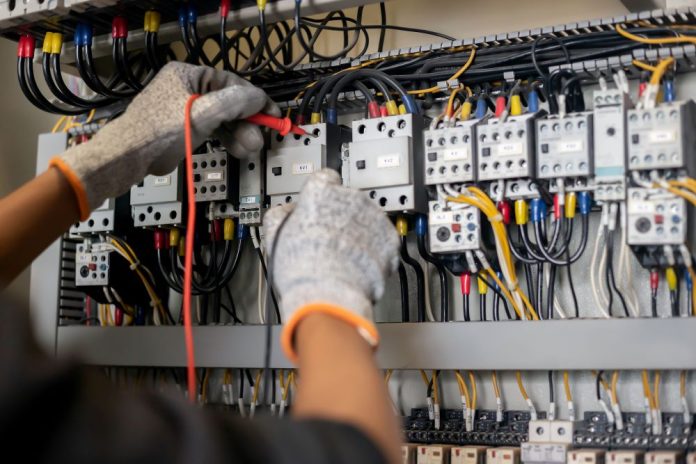Upgrading your building’s electrical system might not sound glamorous, but it’s one of the smartest moves you can make—especially if your property was built before smartphones were a thing. Outdated wiring doesn’t just hold back modern appliances and devices—it can also be a safety hazard. In the 21st century, technology evolves fast, and your electrical setup needs to keep up. Whether you’re managing an office building, apartment complex, or commercial space, a full wiring overhaul can help you avoid breakdowns, reduce energy waste, and even boost property value.
This guide walks you through how to bring your electrical system into the modern age—from assessing your current setup to choosing the right materials and contractors. While it may feel like a daunting project at first, understanding the process can make it a lot more manageable. And in the end, your building—and everyone inside it—will be better off for it.
Assessing the Current State of Your Electrical System
Before jumping into a full upgrade, it’s important to understand where your system stands. Have an experienced electrician inspect the electrical panel, outlets, breakers, and wiring routes throughout the building. Older buildings may still rely on knob-and-tube wiring or aluminum wires, both of which are now considered outdated and potentially unsafe. These inspections will also reveal whether your current system can handle modern energy demands like EV chargers, HVAC upgrades, or data servers.
Take note of frequent issues like flickering lights, warm outlets, or circuit breakers that trip often. These can be signs that your system is overworked or that certain components are beginning to fail. The inspection should also evaluate whether your building meets current local codes and standards. Often, code violations will need to be addressed during the upgrade process. Once you understand the full scope of your current electrical system, you’ll be better prepared to make informed decisions about the overhaul.
Planning for Modern Needs and Future Growth
A key part of any wiring upgrade is thinking ahead. What does your building need today—and what might it need ten years from now? Maybe your tenants want faster internet speeds, more charging ports, or better lighting systems. Perhaps your business plans include adding new equipment or expanding to more floors. Upgrading your system now with future flexibility in mind can save you time and money down the road.
Talk to your electrician or contractor about the latest technology, including smart systems, surge protection, and energy-efficient components. It’s also worth considering solar panel readiness or electric vehicle charging stations, even if you’re not using them just yet. Planning ahead allows you to create a system that grows with your needs, rather than one that constantly needs patching. Once you have a clear plan, your team can start selecting the materials and layout that best support your goals.
Choosing the Right Materials and Wiring Layout
Not all wires and components are created equal, and the materials you choose will have a long-term impact on your system’s performance. Copper wiring is still the gold standard for most buildings, thanks to its durability and conductivity. But even within copper options, there are variations in insulation, size, and intended use. The layout of your wiring—how circuits are divided, where outlets are placed, and how loads are distributed—also plays a major role in reliability and safety.
Working with a reliable supplier matters, especially if you’re sourcing multiple wire types for different parts of the building. Many contractors rely on a building wire seller that carries a wide variety of options, from THHN and NM-B to armored cable and low-voltage wire. Make sure your contractor or engineer is designing with both code compliance and long-term efficiency in mind. The right combination of materials and layout can prevent power loss, overheating, and future rewiring needs.
Hiring Licensed Professionals for the Job
Wiring a building isn’t a DIY project. Licensed professionals are trained to handle the complexity of permits, safety protocols, and building codes that go along with a modern overhaul. Hiring experienced electricians ensures the job gets done right the first time and reduces the risk of future problems. Look for a contractor with a strong portfolio of commercial or large-scale residential projects, as they’ll be more familiar with the scope and planning needed.
Ask for references and check reviews to get a sense of their reliability and work quality. A good electrician will also communicate clearly, helping you understand the steps, schedule, and potential disruptions. Depending on the size of your building, the work may need to happen in phases to minimize inconvenience. Keep in mind that electrical upgrades often require permits and inspections, which your contractor should handle as part of the process.
Testing, Final Inspections, and Ongoing Maintenance
Once the wiring is installed, the job isn’t quite over. Everything needs to be thoroughly tested to ensure it works correctly and safely. This includes checking circuit loads, outlet function, grounding systems, and breaker response. Any issues should be addressed before the final inspection. Local authorities will need to approve the installation before it’s officially complete.
After passing inspection, don’t forget about maintenance. Modern systems may be more efficient and durable, but they still require occasional checks—especially in buildings with high usage. Keep a maintenance schedule and train building staff to recognize signs of trouble early. Preventative care can extend the life of your new system and keep things running smoothly. Investing in a wiring overhaul is just the first step—keeping it in top shape is just as important.
Final Thoughts
Upgrading your building’s electrical wiring is more than just a technical job—it’s a step toward better safety, functionality, and long-term value. By assessing your current setup, planning for growth, choosing quality materials, and working with licensed professionals, you’re setting your property up for success in the digital age. While the process may take time and resources, the benefits far outweigh the inconvenience.
Think of it this way: just as we wouldn’t rely on floppy disks or fax machines today, we shouldn’t rely on outdated wiring either. A 21st-century building needs a 21st-century electrical backbone—and that starts with smart planning and expert execution.










